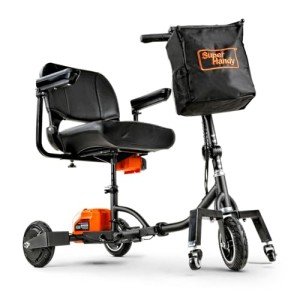Understanding Mobility Devices: Enhancing Independence and Quality of Life
In today's hectic world, the desire for mobility is universal. Nevertheless, particular medical conditions or age-related obstacles can prevent movement, resulting in an ongoing look for assistance. Mobility devices serve as vital tools to enhance self-reliance, enhance lifestyle, and enable people to engage totally in their neighborhoods. This article offers a thorough summary of mobility devices, including their types, functions, choice criteria, and more.
Types of Mobility Devices
Mobility devices range from easy aids to complex devices, customized to satisfy numerous needs. Below is a table summarizing typical types of mobility devices:
| Type of Device | Description | Perfect For |
|---|---|---|
| Walkers | Four-legged assistance devices that offer superior stability while strolling. | People requiring additional support. |
| Canes | Single or three-legged sticks that enhance balance and support walking. | Those with small mobility difficulties. |
| Wheelchairs | Seats installed on wheels, offered in handbook and electric variations. | People with limited or no mobility. |
| Scooters | Electric vehicles developed for outside usage and ease of navigation. | Those who can't walk cross countries. |
| Crutches | Devices that help people move weight away from an injured leg. | People recuperating from leg injuries. |
| Rollators | Walkers with wheels, seats, and brakes for improved mobility. | Users requiring rest options while strolling. |
| Raise Chairs | Reclining chairs that help users in standing and taking a seat. | Seniors or those with mobility restraints. |
| Mobility Scooters | Small electric vehicles for restricted mobility, typically used outdoors. | People needing assistance over cross countries. |
Key Features of Mobility Devices
When choosing a mobility device, numerous key features need to be thought about to make sure ideal functionality and ease of use:
- Weight Capacity: Understanding the gadget's weight limitation is vital for security and efficiency.
- Adjustability: Devices must be adjustable in height and width to fit the user comfortably.
- Portability: Lightweight and foldable alternatives are essential for users who travel or need transportation.
- Stability and Safety: Look for functions like anti-tip wheels and tough structures to improve safety.
- Reduce of Use: Simple mechanisms and user-friendly designs can make a significant difference in day-to-day use.
- Comfort: Ergonomic designs and cushioned seats can boost the user experience.
Picking the Right Mobility Device
Picking the ideal mobility gadget can be a difficult job. Here are some actions to direct the decision-making procedure:
- Assess Needs: Evaluate the person's mobility obstacles and daily activities.
- Speak with a Professional: Engage healthcare experts who can provide recommendations based on the person's physical condition.
- Trial Options: If possible, trial different devices to figure out convenience and functionality.
- Evaluation Budget: Consider the cost of the device, including any extra features or modifications needed.
- Research Options: Determine the very best brand names and models by reading reviews and comparisons.
Table: Comparative Analysis of Popular Mobility Devices
| Gadget | Advantages | Downsides |
|---|---|---|
| Walkers | Excellent stability, promotes strolling. | Large, may limit movement in small spaces. |
| Walking sticks | Lightweight, enhances balance. | May not supply sufficient support for severe mobility issues. |
| Wheelchairs | Suitable for those with substantial mobility restrictions. | Can be troublesome, specifically in indoor environments. |
| Scooters | Great for outside use, easy to maneuver. | Restricted indoor usability, heavier. |
| Rollators | Supplies rest option, simple to move. | May require more space than standard walkers. |
| Raise Chairs | Comfortable, helps transition from sitting to standing. | More pricey, bigger footprint. |
Frequently Asked Questions (FAQs)
1. What is a mobility gadget?
A mobility device is any tool developed to help individuals in moving and browsing their environment. This consists of walkers, wheelchairs, scooters, and crutches.
2. How do I know which mobility device is best for me?
Consider your specific mobility challenges, physical capabilities, and way of life needs. Consulting with healthcare experts can also provide tailored recommendations.
3. click here covered by insurance coverage?
Lots of insurance coverage plans, consisting of Medicare, might cover certain mobility devices. It's crucial to contact your insurance coverage supplier for particular coverage information.
4. Can I lease a mobility device rather of purchasing one?
Yes, numerous medical supply shops and pharmacies provide rentals for mobility devices. This alternative is useful for individuals with momentary mobility concerns.
5. How can I keep my mobility device?
Routine maintenance is important. It includes cleaning up the device, examining for wear and tear, and ensuring all parts are working correctly.
The Impact of Mobility Devices on Quality of Life
Mobility devices significantly improve the lifestyle for people with restricted mobility. They promote independence, motivate social interaction, and improve access to necessary services and recreational activities.
- Increased Independence: Users can navigate their areas, go to events, and engage in pastimes without depending on others.
- Social Engagement: Mobility devices help with participation in celebrations, thereby combating sensations of isolation.
- Boosted Safety: Devices supply stability and minimize the danger of falls, promoting user self-confidence.
Mobility devices are more than simply tools for movement; they are entrances to self-reliance and quality living. By understanding the different kinds of mobility aids offered, their key functions, and factors to consider for choosing the right device, people can make informed choices about their mobility needs. Eventually, the right mobility gadget can lead to a more active, fulfilling life. Whether it's a walker, wheelchair, or scooter, the right option contributes substantially to boosting the mobility and independence of users.

